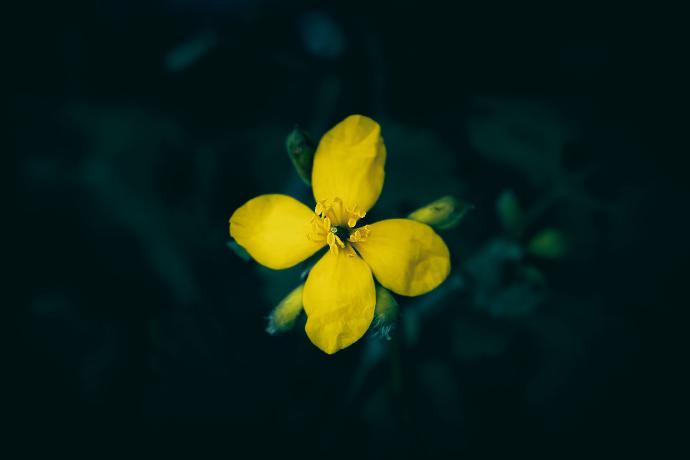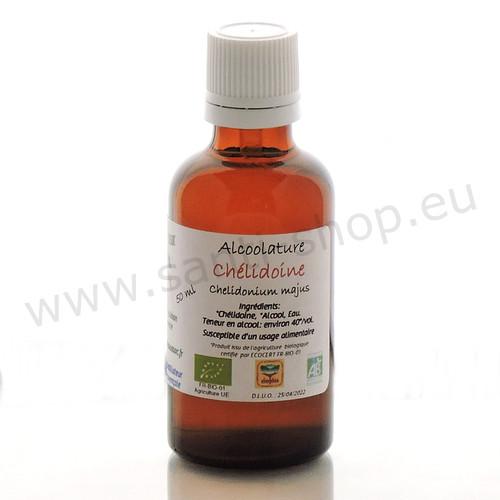Since ancient times, chelidonia has been part of traditional and popular European pharmacopoeia. A toxic plant when ingested fresh, it is a powerful natural remedy when used as a mother tincture. Digestive and hepato-stimulating, it also removes warts, corns and calluses. Discover the benefits of chelidonia mother tincture.
What is chelidonia?
Kelidonia, also known as "wartweed", is a 30-60 cm-high perennial that grows in rubble and at the foot of walls. It is found throughout the northern hemisphere.
Botanically, it is as follows:
large, bluish, soft leaves cut into broad, rosette-shaped lobes
yellow flowers with four petals that fade quickly
the fruits are elongated and filled with black seeds appreciated by ants
a stem from which an acrid, orange-yellow liquid emerges when broken.
What are the main constituents of chelidonia?
The plant contains numerous alkaloids, including :
chelidonin
the sanguinarine
berberine
coptisine
What is the traditional use of chelidonia?
Ancient legends have it that swallows used to break off the stems of chelidonia and apply the juice to the corners of their young's eyes to help them open. At the time, chelidonia was said to improve visual acuity, but this has never been proven...
However, in the early 20th century, chelidonia extract was used to combat cancerous tumors. Although it did not cure cancer, it did limit tumor proliferation.
Caution: chelidonia is a toxic plant
In its pure state, chelidonia is toxic for internal use. It should only be used internally on medical prescription and, with your doctor's approval, should only be taken as an extract or mother tincture.
In fact, ingestion of fresh leaves and latex can cause serious digestive, nervous and cardiac problems.
The use of chelidonia is not recommended for pregnant women or children.

Proven therapeutic properties of chelidonia
La chelidonia is considered a powerful choleretic. This means it activates bile production and increases its volume. It also relieves liver pain and calms the gallbladder.
German authorities recommend the chelidonia for abdominal spasms, digestive cramps and bladder problems.
Finally, this plant stimulates the immune system, has a depurative action and relaxes bronchial and intestinal muscles.
External use of chelidonia
La chelidonia is also used externally, applied directly to the skin. Applied repeatedly, its juice burns away warts, corns and calluses. Alternatively, a few drops of chelidonia mother tincture can be placed on a cotton pad and held in place with plaster, so that the active ingredients are in direct and continuous contact with the area to be treated.
Dosage as recommended by Ferme de Saussac
- 20 drops (or 3 sprays) 3 times a day, in 3-week courses of treatment, stopping for a few days between 2 courses.
Reminder : on medical prescription for internal use
It's best to take the drops directly under the tongue, and wait a little before swallowing. They can also be diluted slightly in water or sprayed directly into the mouth.
For those who prefer to eliminate the alcohol, place the drops in very hot water (over 60°C) and allow the alcohol to evaporate for a few minutes.
Mother tincture of chelidonium majus of the Saussac farm
La Celidonia mother tincture from Ferme de Saussac is a high-quality product. The plants are harvested by hand, then dried at room temperature or used fresh to preserve their active ingredients.
"We only use compost as fertilizer, a few purins from our own plants, and NO phytosanitary products. We consider that if a plant is sick, it's because we've made a mistake (inadequate watering, poor location...). The solution is to change the growing conditions. (1)
Last but not least, Ferme de Saussac uses radiesthesia to ensure the energetic quality of its products.
Where is Ferme de Saussac?
La Saussac Farm is located in the Drôme Provençale on a 60-hectare plateau, 10 hectares of which are reserved for the cultivation of lavender, thyme, rosemary, Damask roses, mint, lemon balm and calendula, and where Scots pine, boxwood, oak, juniper, lime, yarrow, hawthorn, mallow, St John's wort and other wild plants are collected...
Source :
(1) https://www.fermedesaussac.fr/




